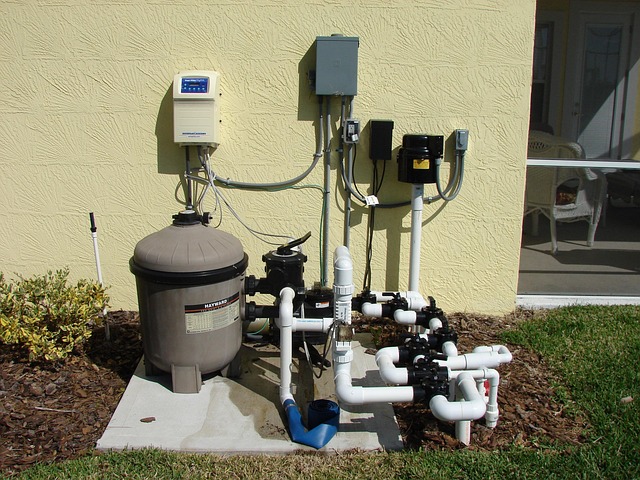Senior Living in the UK: Comfort, Care, and Community in One Place
Modern senior living options in the UK combine comfort, independence, and care in well-designed communities. Learn how today’s residences balance lifestyle and support, what factors influence choice, and which services define the most trusted senior housing environments.

The journey into senior living represents a significant transition for older adults and their families. In the United Kingdom, senior living encompasses a spectrum of residential options designed to meet the diverse needs of the aging population. These environments aim to provide not just accommodation, but holistic support systems that enhance quality of life through appropriate care levels, social engagement, and comfortable surroundings. With an aging demographic and evolving expectations about later life, the UK’s senior living sector continues to develop innovative approaches to elder care that balance independence with necessary support.
Finding Quality Care Homes in Your Area
When searching for care homes in your area, location often becomes a primary consideration for families wanting to maintain close connections with their loved ones. The UK offers approximately 11,300 care homes with varying specializations and amenities. Local councils maintain directories of registered care facilities, while the Care Quality Commission (CQC) provides detailed inspection reports and quality ratings to help inform decisions. Many families benefit from visiting multiple facilities to assess firsthand the environment, staff interactions, and overall atmosphere. Digital platforms have also emerged that allow filtering options based on specific needs, such as dementia care, nursing support, or cultural considerations.
Nursing Homes Throughout England: Standards and Options
England’s nursing homes operate under strict regulatory frameworks to ensure consistent care quality. Unlike residential care homes, nursing homes provide 24-hour medical supervision from registered nurses alongside personal care assistance. These facilities cater to individuals with complex health needs, chronic conditions, or those requiring rehabilitation after hospital stays. The NHS and social services often work collaboratively with nursing homes to coordinate care plans. England’s nursing home landscape varies considerably by region, with urban areas typically offering more options but at higher price points compared to rural locations. All nursing homes must meet national care standards and undergo regular inspections by the CQC.
Exclusive Care Homes in Kensington and Chelsea
Kensington and Chelsea, among London’s most affluent boroughs, hosts several distinguished care facilities known for their premium environments and comprehensive services. These care homes often feature hotel-like amenities, including fine dining experiences, landscaped gardens, and cultural programming. The architectural character of many facilities reflects the borough’s historic charm, with some operating from converted period properties. Care staff ratios in these establishments typically exceed national averages, allowing for more personalized attention. The borough’s central location provides residents with proximity to world-class medical facilities, including specialized geriatric services at nearby teaching hospitals.
Understanding Senior Living Pricing Structures
The cost of senior living varies significantly based on location, care level, accommodation type, and included services. Independent living options generally represent the lower end of the pricing spectrum, while nursing care commands premium rates due to higher staffing requirements and medical oversight. Most care homes charge a weekly fee that covers accommodation, meals, utilities, and basic care, with additional services available at extra cost.
| Type of Care | Average Weekly Cost | Typical Inclusions |
|---|---|---|
| Residential Care | £650-£850 | Accommodation, meals, personal care, activities |
| Nursing Care | £850-£1,200 | As above plus nursing supervision |
| Dementia Care | £900-£1,300 | Specialized support, secure environment |
| Luxury Care (Kensington) | £1,500-£3,000+ | Premium amenities, higher staff ratios |
Prices, rates, or cost estimates mentioned in this article are based on the latest available information but may change over time. Independent research is advised before making financial decisions.
Care Options for Elderly Adults Across the UK
The UK’s approach to elderly care encompasses diverse models beyond traditional care homes. Sheltered housing offers independent living with emergency assistance systems and visiting wardens. Extra care housing provides self-contained apartments with on-site care teams available as needed. For those preferring to remain in their own homes, domiciliary care services deliver support ranging from weekly visits to live-in arrangements. Respite care facilities offer temporary accommodation for elderly individuals, providing family caregivers with essential breaks. Meanwhile, continuing care retirement communities (CCRCs) allow residents to transition between independence and higher care levels within the same community as needs change.
Evaluating Care Quality and Making Informed Decisions
When considering senior living options, families should assess several key factors beyond location and cost. The CQC ratings provide standardized evaluations across safe, effective, caring, responsive, and well-led categories. Staff turnover rates often indicate workplace culture and care consistency. Resident-to-staff ratios reveal the potential level of individual attention available. Nutrition programs, activity calendars, and visitor policies significantly impact quality of life. Many care homes now offer virtual tours and trial stays to help prospective residents determine compatibility before making long-term commitments.
The decision to transition into senior living involves careful consideration of physical needs, emotional wellbeing, and financial resources. The UK’s diverse care landscape continues to evolve, with increasing emphasis on person-centered approaches that honor individual preferences and promote dignity. While navigating these options may seem overwhelming initially, thorough research and consultation with healthcare professionals can help identify environments where seniors receive appropriate support while maintaining meaningful connections and personal autonomy.




